Epics on Celluloid: Sinhala Cinema After the Civil War
Ethnic conflict between the majority Sinhala community and the minority Tamil community has long dominated Sri Lanka’s politics and history. From the late 1980s, this has further been marked by the thirty years of civil war. As one of the most popular and accessible mediums, how did cinema as a mode of mass cultural production respond to this socio-political context during and after the war in the country?
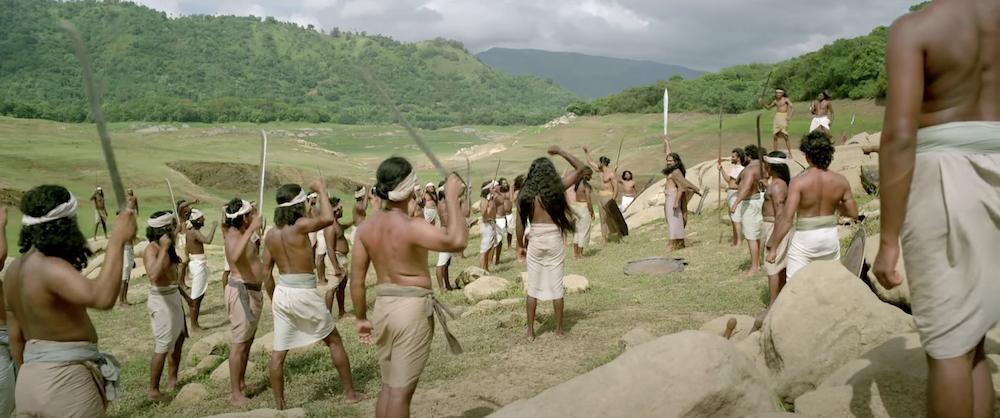
Directed by Chathra Weeraman and Baratha Hettiarachchi, Aloko Udapadi (Light Arose, 2017) features the story of King Valagamba, who ruled the country by drawing inspiration from Buddhism. (Image courtesy of the artists.)
Sinhala cinema began dealing with themes of the ethnic conflict in the 1990s, years before the end of the war, beginning with films like Prasanna Vithanage’s Pura Handa Kaluwara (Death on a Full Moon Day, 1997). A landmark film, it focuses on the rural working-class family of an army soldier whose sudden death in the battlefield ravages all except his blind father, who refuses to believe the news of his passing. The film ends with the father struggling to come into terms with the fact that the war ended his son’s life. Pura Handa Kaluwara was only permitted to be screened in local theatres as late as 2001. It was successful financially, having received many accolades at international film festivals in the preceding years. This realist inquiry continued well into the 2000s with many more films such as Saroja (2000), Sulanga Enu Pinisa (The Forsaken Land, 2005), Ira Handa Yata (Under the Sun and Moon, 2010), Igillena Maluwo (Flying Fish, 2011), and Ini Avan (Him, Here After, 2012), etc., exploring the war and its consequences.
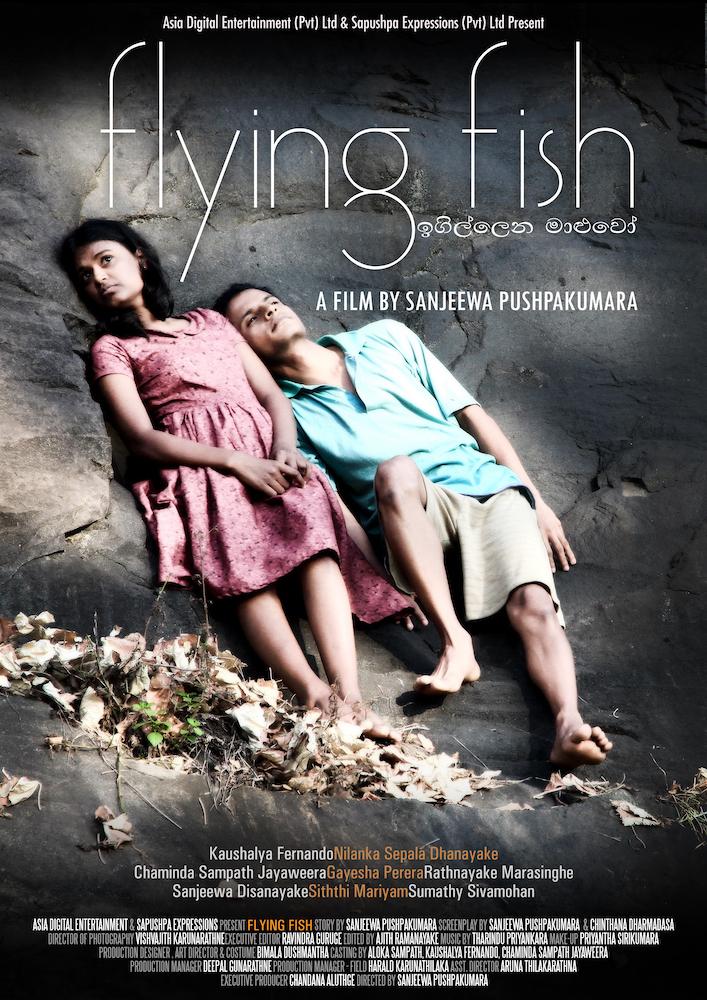
Directed by Sanjeewa Pushpakumara, Igillena Maluwo (Flying Fish, 2011) is an anthology film consisting of three episodes that explore different forms of violence, set against the backdrop of the civil war in Sri Lanka. (Image courtesy of Wikimedia commons.)
A few months before the war officially ended in May 2009, Jackson Anthony’s film Aba (2008) was released. This signalled the beginning of a phenomenon in Sinhalese cinema that uses the form of epic sagas based on historical legends to promote nationalistic thinking. The film was developed with a large budget and an extended cast. While Anthony was well-recognised as an actor and filmmaker and therefore had a fan-base; theatregoers were not used to extravagant historical dramas. Due to the rise of independent filmmaking in the 1980s and 1990s, Aba was initially received with skepticism. Independent films of the likes of Pura Handa Kaluwara tended to focus on more realistic circumstances around the conflict, which had thus become familiar as a form. Thus, the cinematography and the storyline of Aba—which was drawn from the epic of King Pandukabhaya—were new experiences for the audiences, who had never seen historical dramas of such a scale on the large screen. Any doubts harboured against the film were soon overcome by heavy promotions. These were especially directed towards family audiences who would be interested in watching the ancient Sinhala king’s childhood brought to life. According to the Mahavamsa, a fifth-century epic historical chronicle, King Pandukabhaya (474 BC–367 BC) was the first monarch to unite the country and rule it through the first established kingdom of ancient Sri Lanka, Anuradhapura.
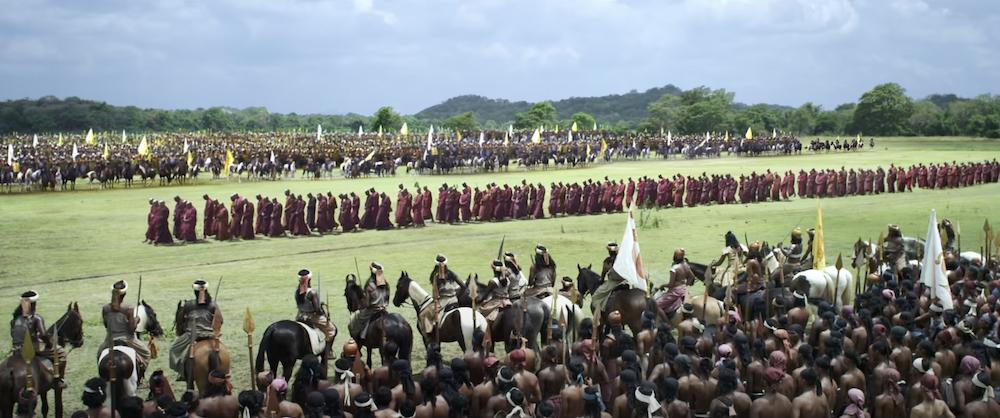
Maharaja Gemunu (2015), directed by Jayantha Chandrasiri, depicts the story of King Dutugemunu. Known for his courage and dedication, the film focuses on his mission to unite Ceylon through his reign in the kingdom of Anuradhapura. (Image courtesy of the artist.)
In 2008, the then regime was also focused on uniting a country ravaged by the war. The film therefore worked on two levels at the time: as an educational tool for young students to learn about King Pandukabhaya; and as an opportunity for many to rethink their relationship with the country by remembering how their ancestors had loved and protected the nation. The film catered heavily to promoting notions of nationhood and patriotism at a time when many were showing signs of perpetual exhaustion due to the genocide on the battlefield and beyond. Approximately fifteen years after Aba, in 2022, one feels inclined to dig deeper into this response as many films of a similar nature have reached Sri Lankan audiences.
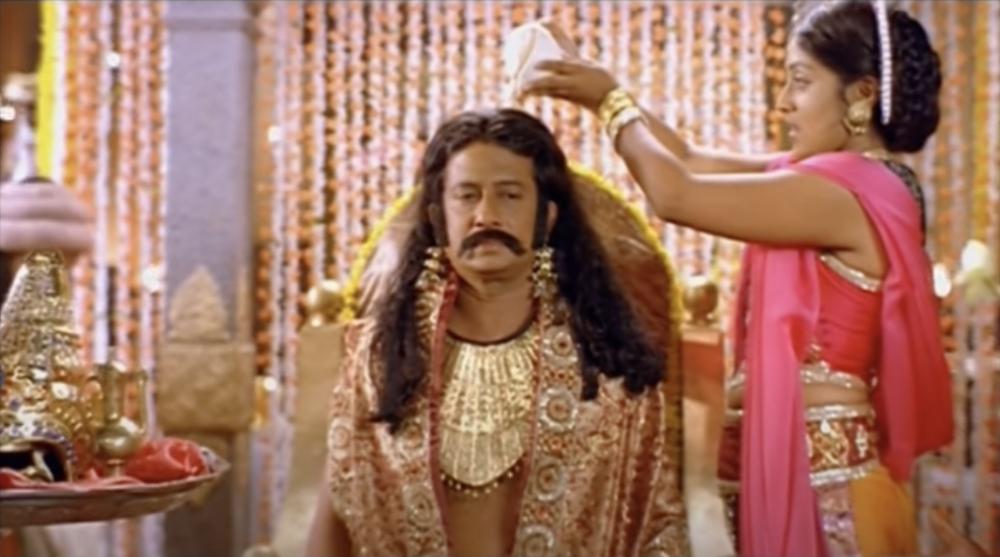
Mahindagamanya (2011) directed by Sanath Abeysekara, focuses on Sinhala King Devanampiyatissa’s attempts at incorporating Buddhism into the country. (Image courtesy of the artist.)
The release of a number of such historical sagas in the immediate aftermath of the Civil War highlights the continuing trend of heightened patriotism and nationalism. Films such as Mahindagamanya (2011) Maharaja Gemunu (2015), Aloko Udapadi (Light Arose, 2017), etc., present glorified pasts with storylines focusing on different kings’ attempts at unifying Ceylon. However, the exclusivity in terms of language access and the continuous emphasis on Sinhala legends and histories indicates towards the blurred lines between nationalism and militarism—the presence of which is felt more than ever after the war within the country. This attempt to build a Sinhalese Buddhist nation through a special focus on particular histories also further alienates the many communities that have remained invisible throughout the country’s history. Sumathy Sivamohan, a filmmaker who makes films primarily in Tamil, has spoken of the discomfort she feels following this phenomenon of epic sagas on celluloid which lead to divisive retellings of local histories.
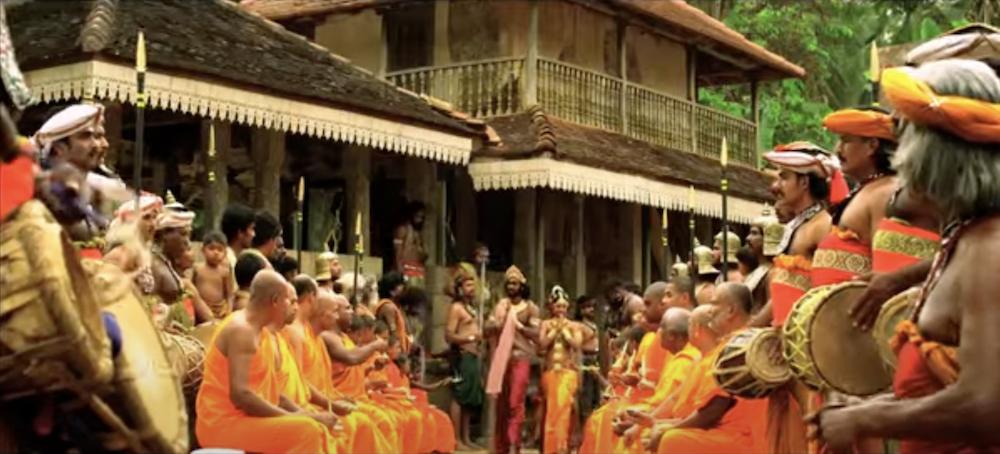
Siri Parakum (2013), directed by Somaratne Dissanayake, narrates the story of King Parakramabahu II of the Dambadeniya Kingdom, who is also known for unifying the country. (Image courtesy of the artist.)
The phenomenon of epic cinematic sagas in Sri Lanka can be thus seen as hegemonic, distancing citizens from the possibility of meaningful reconciliation after the civil war. This operates on two registers: first, by retelling particular narratives from ancient history and thereby highlighting militarism under the guise of nationalism; and second, by using mass cultural production to spread nationalistic sentiments instead of facilitating a reconciliation rooted in a present that reminds citizens of the country’s multicultural existence.
To read more about Sri Lankan cinema, please click here.




